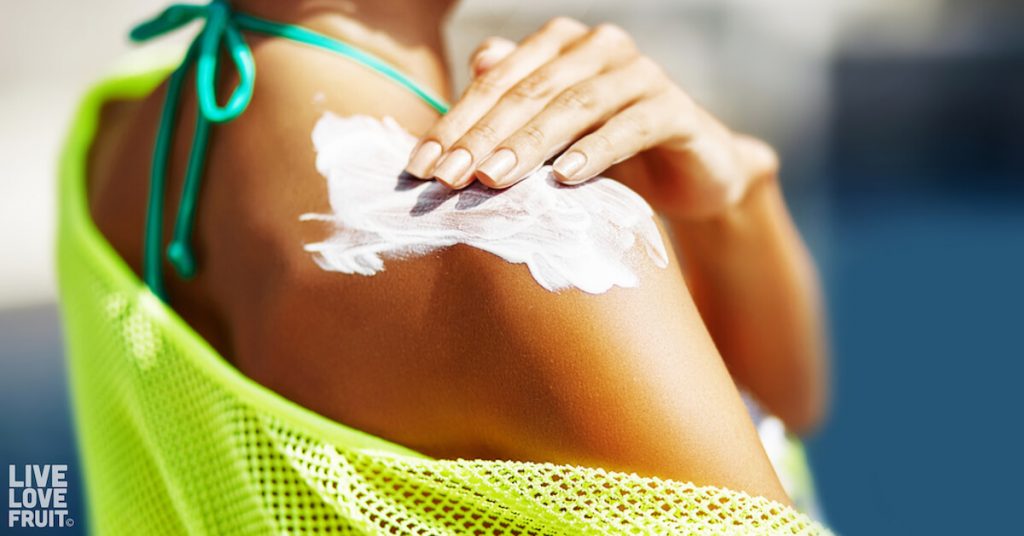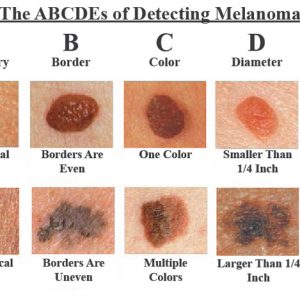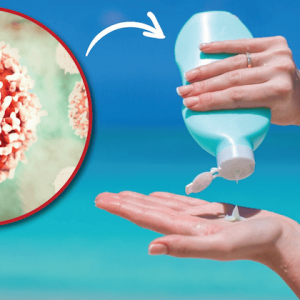
Using sunscreen to protect our skin has been a concept thrown at us for decades. But have you ever asked the question – does sunscreen cause cancer? Why is it that with the rise of sunscreen use, melanoma cases sky-rocketed? Is it because our ozone layer is getting weaker, or because the chemicals in sunscreen are reacting with the sun and putting us at danger of DNA mutation?
While many of us have these questions, some people don’t even think twice. They lather on the 100+ SPF morning and afternoon without even taking a look at the ingredient list. With that being said, I can’t blame people for not thinking to do so. We’re not really taught as a society to think or question the chemical ingredient lists in our personal care products, let alone on the lists of the food we eat.
Skin Cancer on the Rise
Melanoma, the most deadliest form of skin cancer, has steadily increased over the last few decades. According to the National Cancer Institute, the rate of new melanoma cases among American adults has tripled since the 1970s, from 7.9 per 100,000 people in 1975, to 23 per 100,000 in 2015 (NCI 2018).
Each year, since 2003, rates of new melanoma cases have been climbing by around 1.7 percent for men and 1.4 percent for women each year (1). As a result, sun-care products have been thriving. But is there a correlation between skin cancer rise and the chemical ingredients in sunscreen? Does sunscreen cause cancer in those who are oblivious to the chemicals they’re putting on their skin?
The two most common kinds of skin cancer are basal cell carcinoma and squamous cell carcinoma, which are sometimes called non-melanoma skin cancer (2). Basal cell carcinomas account for more than 90 percent of all skin cancers in the United States, and is the most common of all cancers. Basal cell carcinomas are slow-growing and they very rarely spread to other parts of the body. Squamous cell carcinoma also rarely spreads, but it does so more often than basal cell carcinoma.
Then there is melanoma, a highly aggressive cancer that tends to spread to other parts of the body. These cancers may be fatal if not treated early (3).
While some researchers have found that regular sunscreen use lowers the risk of squamous cell carcinomas (4), there isn’t strong evidence to suggest that regular sunscreen use prevents basal cell carcinoma (5, 6, 7, 8, 9) – the most common and widespread form of skin cancer in the United States.
In addition, research has found that while sun exposure does appear to play a role in melanoma, melanomas do not usually appear on parts of the body that get daily sun exposure. As a result, scientists don’t know conclusively whether sunscreen can help prevent melanoma. Some studies suggest that sunscreen users are at an increased risk of melanoma (10), with other studies reporting higher incidences of melanoma among frequent sunscreen users (11, 12, 13).
While the results of these studies suggest that people who use sunscreen spend more time in the sun, and are thus at a higher risk of developing skin cancer, could the ingredients in the sunscreen itself be causing an issue, too?
Does Sunscreen Cause Cancer?
I don’t know about you, but I read every ingredient on every product I’m about to put on my skin. After all, our skin is the largest organ in our body, and science has long shown that what we put on our skin ends up in our bodies – and quickly at that.
Many studies have demonstrated the effects of different sunscreens and how quickly the ingredients penetrate and absorb into the skin after application. One study, conducted in my home town at the Faculty of Pharmacy at the University of Manitoba, Canada, sought to develop a method for quantifying common sunscreen agents. Results revealed significant penetration of all sunscreen agents into the skin, meaning that all of these chemicals are entering our bloodstream, and as a result, entering multiple organs and cells within the body (14).
So, the next question becomes, are these ingredients that are entering our bloodstream particularly harmful? While much of the corporately-funded ‘science’ that profits off the sales of sunscreen products says no, much of the unbiased research says yes.
The most common sunscreens on the market contain mineral or chemical UV filters or both. We don’t have to worry so much about the mineral-based sunscreens as we do the chemical-based ones. The chemical filters in sunscreen often include a combination of two to six of the following active ingredients: oxybenzone, avobenzone, octisalate, octocrylene, homosalate and octinoxate. It is these ingredients that some laboratory studies claim may mimic hormones and cause skin-related allergies.
The Food and Drug Administration (FDA) hasn’t reviewed the safety of these chemicals since the late 1970s. However, the Danish EPA concluded that after a careful review of the safety of active ingredients in sunscreen, most ingredients lacked information to ensure their safety (15). Sixteen of the 19 ingredients studied had no information about their potential to cause cancer.
The most worrisome of these chemicals is oxybenzone, which is added to over 65 percent of non-mineral sunscreens.
Oxybenzone
Oxybenzone absorbs harmful UV light, but it’s also believed to cause hormone disruption and cell damage, which could trigger cancer development down the road.
According to the Environmental Working Group (16):
Commonly used in sunscreens, the chemical oxybenzone penetrates the skin, gets into the bloodstream and acts like estrogen in the body. It can trigger allergic reactions. Data are preliminary, but studies have found a link between higher concentrations of oxybenzone and health harms. One study has linked oxybenzone to endometriosis in older women; another found that women with higher levels of oxybenzone during pregnancy had lower birth weight daughters.
Oxybenzone is a persistent chemical that has been detected in nearly all people tested. It has been found in human plasma, urine and breast milk. A study out of the Institute of Pharmacology and Toxicology from the University of Zurich found that oxybenzone may also mimic the effects of estrogen in the body, and promote the growth of cancer cells (17).
It’s not as easy as just avoiding oxybenzone, because if you avoid one ingredient, you’ll likely be posed by other, equally as harmful chemicals.
Methylisothiazolinone
Methylisothiazolinone, for example, is a skin sensitizer or allergen, and has been found to be the culprit in many reports of serious cases of skin allergies in children (18). Oddly enough, this very chemical is present in sunscreen products marketed for use on babies.
Retinyl Palmitate (Vitamin A palmitate)
Another ingredient, retinyl palmitate (a form of vitamin A), may speed the development of skin tumors and lesions when applied to the skin in the presence of sunlight (19). This is troubling, given the fact that the sunscreen industry adds vitamin A to many sun-care products like beach and sport sunscreens, as well as moisturizers and lip products with SPF.
While vitamin A is extremely beneficial when consumed in the form of whole foods (and actually reduces the risk of squamous cell carcinomas), it has been found to speed the growth of cancerous tumors when used on skin exposed to sunlight.
Scientists have found that vitamin A triggers excess skin growth (hyperplasia), and when in sunlight, retinyl palmitate forms free radicals that damage DNA (and thus set the stage for potential tumor growth) (20).
Frequent use of sunscreen over the day (which includes ingredients like retinyl palmitate) may then actually increase the speed at which malignant cells develop. So does sunscreen cause cancer? I believe the direct effects of chemical use on the skin, plus indirect implications of believing that sunscreen is the only way we should protect ourselves from the sun are both to blame.
Sunscreen Circulates in Blood for Weeks
An alarming new study published in January of 2020 suggests we should all choose sunscreen with greater caution.
According to the new findings, “Chemical sunscreen ingredients are systemically absorbed after one application, and some ingredients can stay in the blood for at least 3 weeks.”
All of the six active ingredients tested readily absorbed into the bloodstream of human participants.
The scary part? Levels of these chemicals detected in the bloodstream surpassed an important FDA safety threshold.
The sunscreen chemicals tested include avobenzone, homosalate, octinoxate, octisalate, octocrylene, and oxybenzone.
The study builds on previous research, which found similar conclusions, urging further studies to determine the clinical significance of their findings.
Sun Exposure: Cancer Cause or Part of the Solution?
Many studies have suggested that regular sun exposure isn’t actually as harmful as we once thought. While high-intensity sunlight should be avoided when possible, some studies have found the opposite. In fact, outdoor workers have been found to report lower rates of melanoma than indoor workers (21). Melanoma rates are also higher among those who live in Northern American cities with less year-round UV light than residents who live in sunnier cities (22).
Could this have something to do with the cancer-protective effects of vitamin D? Science says yes. Three separate studies have found that higher vitamin D levels for those who receive regular sunlight exposure may play a role in reduced melanoma risk (23, 24, 25).
If only 10% of all cancer cases are attributed to all forms of radiation (and UV being only a very small part of that umbrella category), it draws a clear path as to why we should stop blaming the sun for all our skin cancer problems. Skin cancer can be caused by pesticide and/or herbicide exposure, heavy metal exposure, household chemical use, and of course – chemical products we directly apply to our skin.
Most of us have been slathered with sunscreen since the day we were born. Our skin has become so resistant to sun exposure that it has no idea what to do, except burn, when we venture out into the great outdoors. Those who spend a larger portion of their time in the sun build a natural resistance to dealing with harmful UV rays. In a sense, building up your exposure to sun allows your skin to adapt and build a natural immunity.
Sunburns, however, are dangerous, and should be avoided altogether.
The general consensus here, is that people should not avoid all sun exposure, just take steps to avoid sunburn, if they’re wanting to reduce their chances of getting skin cancer. Maybe it’s time for a little lifestyle change. Perhaps we shouldn’t go to the beach when it’s blazing hot out and expect our sunscreen to be the only thing protecting our skin (because really, it’s not).
Natural Sunscreen Alternatives
There are many natural sunscreen alternatives out there that don’t contain harmful ingredients. If you’re up to it, you can even make your own chemical-free sunscreen.
The most important thing about sun safety is that you should plan your day to not just depend on sunscreen alone (whether it is natural or not). Go outside during low UV hours in your location. Find out when UV radiation is at its peak, and avoid those hours. Or, if you must be outside during those hours, cover up! Wear a hat and wear a loose fitted long-sleeve shirt.
Eating a diet rich in anti-oxidants and healthy plant-based fats is another way to help protect your skin from DNA mutations. The Skin Cancer Foundation even expressed on their website that the food you eat directly correlates to how well your skin is protected from the sun. The University of Maryland also found that certain nutrients found in many plant-based foods help the body fight free radicals that destroy and cause the mutation of abnormal cells (like cancer).
Personally, I’ve found that eating a diet rich in raw plant-based foods has made me nearly “sun-proof” as in, I very rarely burn, even in the highest UV exposure.
Now, here are some natural sunscreen alternatives you can use in replacement of the more hazardous brands concocted with toxic chemicals:
– Raw Elements Certified Natural Sunscreen
– Goddess Garden Organics Sunscreen
– Badger Mineral Sunscreen
– 100% Pure Everywhere Body Stick SPF 30
– Miami Cool Kids LaPlaya Zinc Organic Sun Stick SPF 30
– Kokua Sun Care SPF 50
Making these lifestyle changes and switching up your sun-exposure habits will greatly reduce your risk of developing skin cancer. If you want to be out in the sun and need a little extra protection, always opt for natural sunscreens over conventional ones.









thank you…that these products are even in sunscreen, reminds me how corrupt our govt is…letting big business control those areas of govt, for profit…